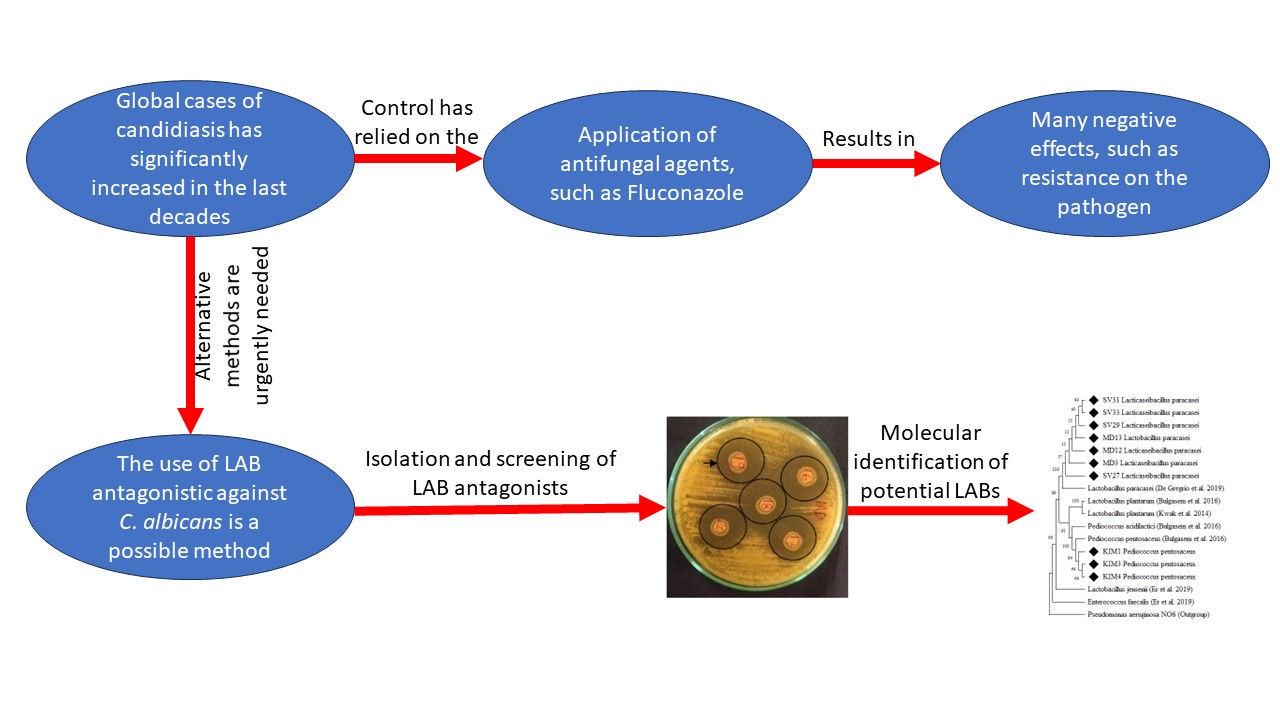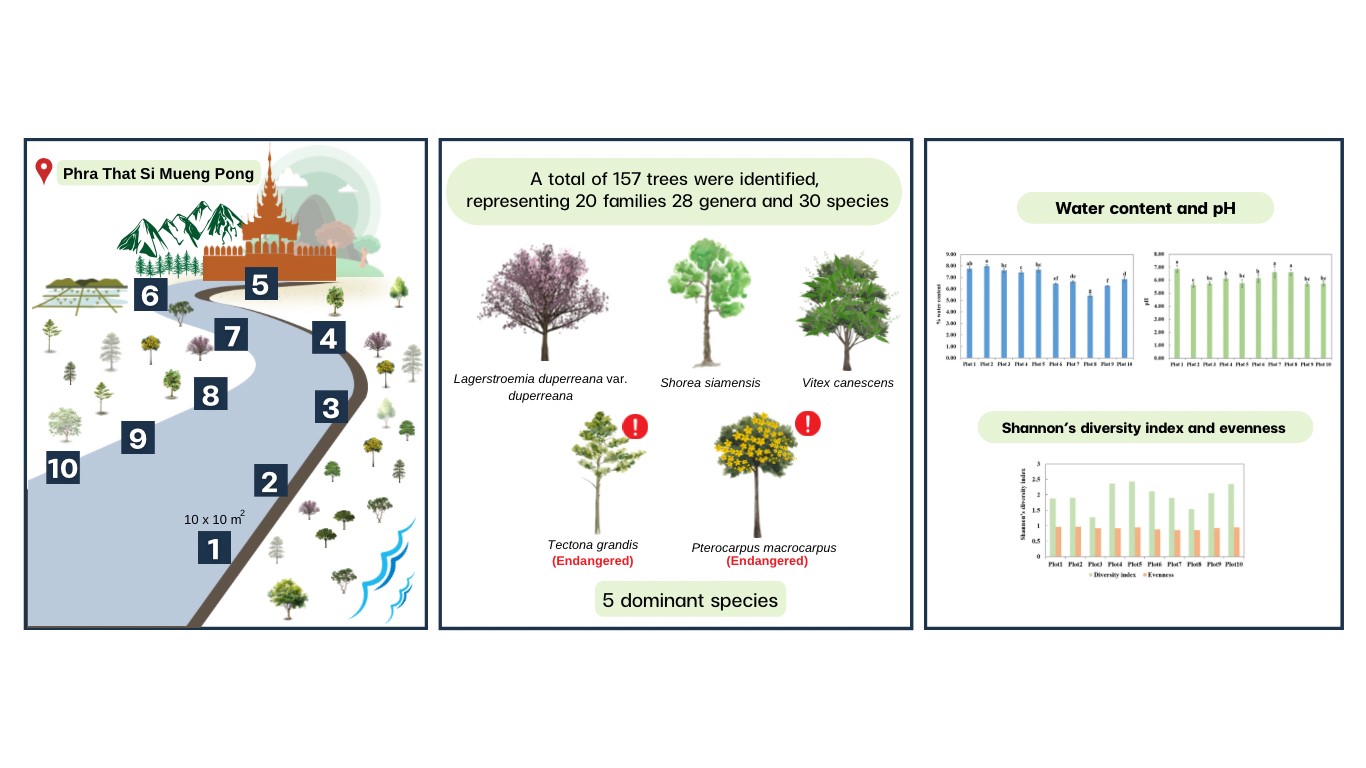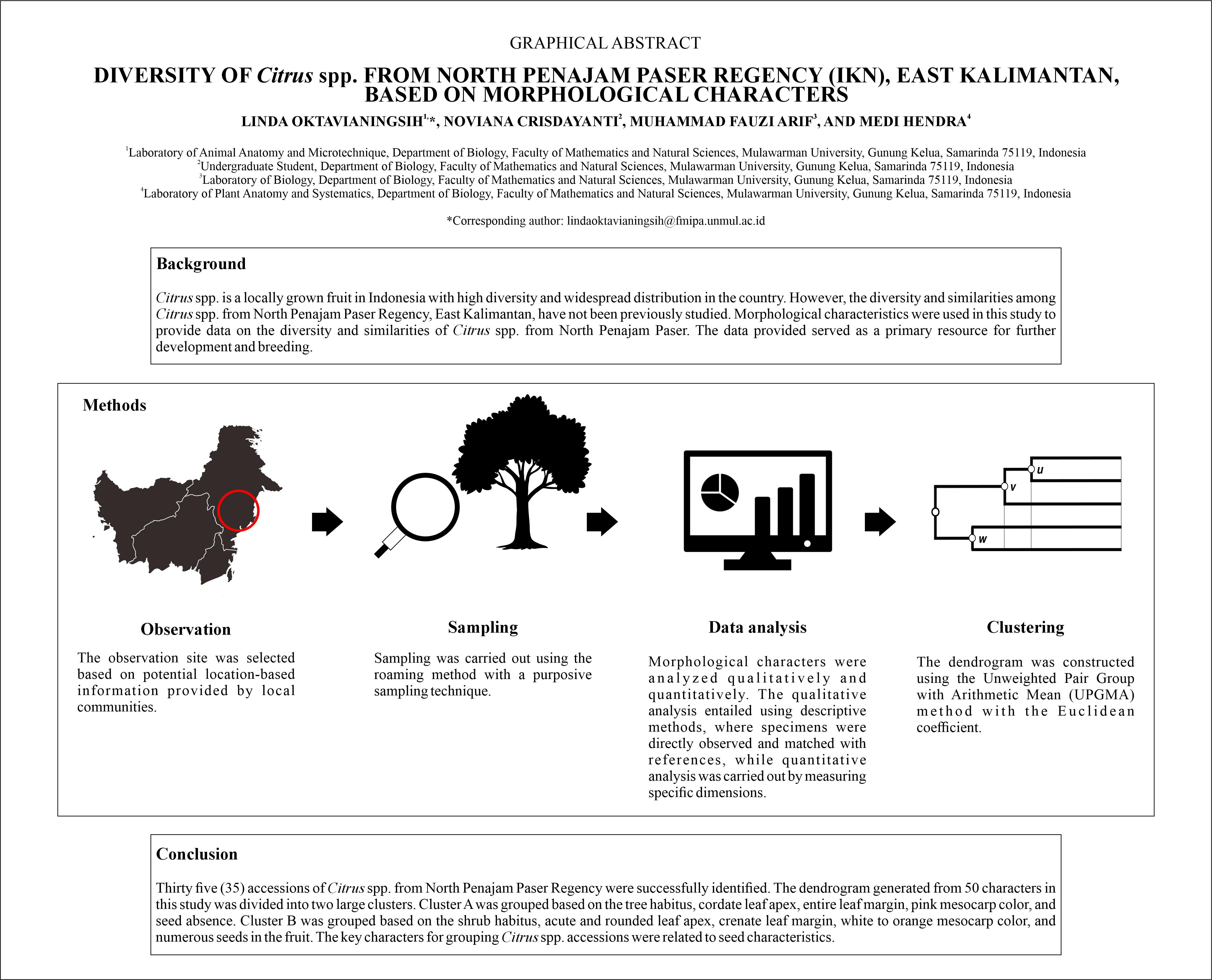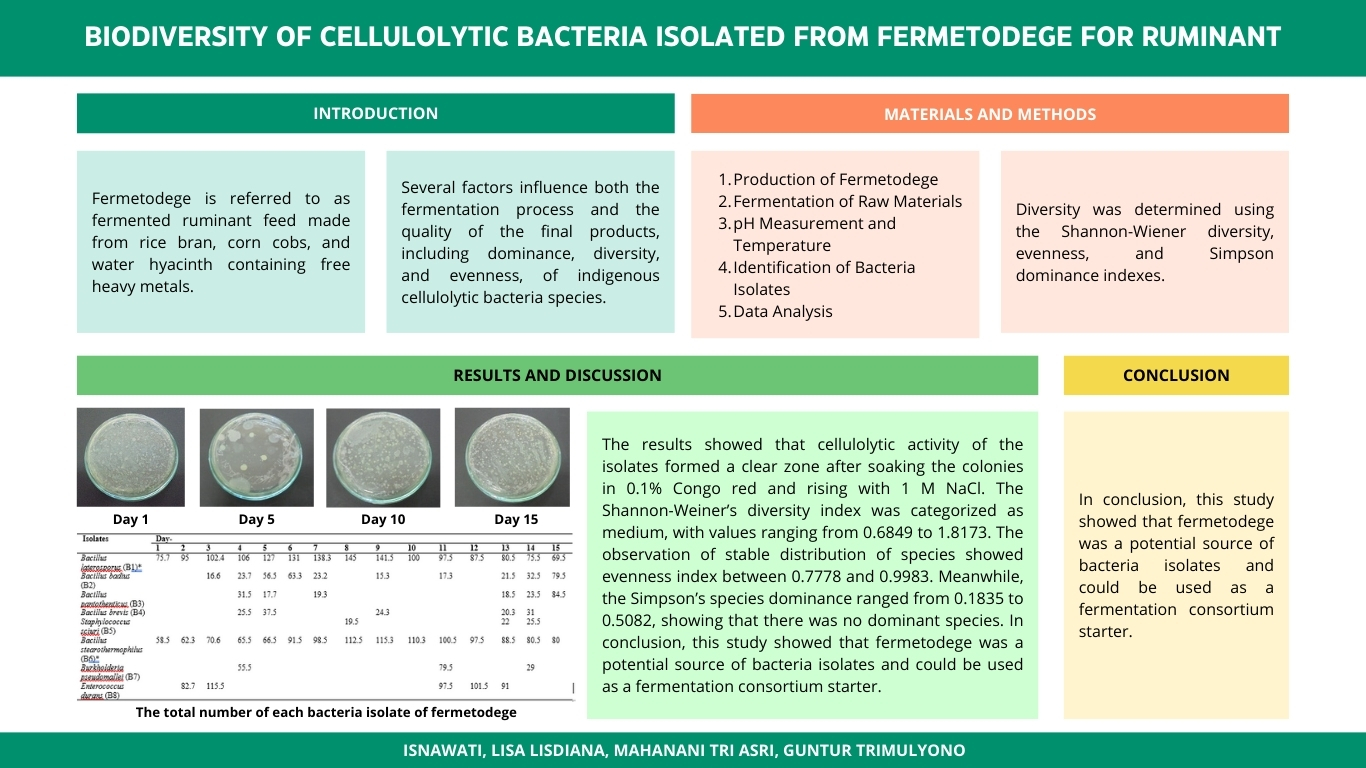The POTENTIAL OF LACTIC ACID BACTERIA, ISOLATED FROM SEVERAL SOURCES, TO INHIBIT THE GROWTH OF Candida albicans ATCC10231

Downloads
ARTICLE HIGHLIGHTS
- Lactic acid bacteria have potential to control candidiasis or Candida albicans.
- The novelty of this study is to advance the potential of lactic acid bacteria to control candidiasis infection in human, with a view to develop novel LAB-based probiotic candidates with capability to inhibit/prevent infection by C. albicans, the causative agent of candidiasis.
ABSTRACT
The main aims of this research were to isolate and identify potential lactic acid bacteria (LAB) inhibitory to Candida albicans. The LAB sources were kimchi, honey and vaginal secrete of healthy women. They were isolated with a view to develop a novel alternative method with reduced use of antifungal agents in the treatment of patients infected by such fungal pathogen. Isolation of the LABs was conducted by applying dilution spread method on de Mann Rogosa Sharpe agar (MRSA) medium supplemented with bromo cresol purple (BCP) indicator. Once purified, they were tested for antagonism against C. albicans in dual culture assays. LAB isolates that showed significant inhibition against the pathogen were identified using 16s rDNA sequences and their sequences were aligned with those of known sequences deposited at the Gene Bank (http://www.ncbi.nlm.nih.gov). The results showed that 46 among more than 100 LABs isolated in this study significantly inhibited the growth of C. albicans in the in vitro dual culture assays, and all showed resistance property to antifungal agent (fluconazole). This indicated that they all have potential to be synergically applied with reduced use of fluconazole in the therapy. The most potential isolates (10 isolates) were closely related to three LAB species, namely Lactobacillus paracasei, Lacticaseibacillus paracasei, and Pediococcus pentosaceus, based on their 16s rDNA sequence similarities with those deposited in the GenBank.
Downloads
Amabebe E, Anumba DOC. 2018. The vaginal microenvironment: The physiologic role of Lactobacilli. Front Med (Lausanne) 5:181. DOI: 10.3389/fmed.2018.00181 DOI: https://doi.org/10.3389/fmed.2018.00181
Anh DN, Hung DN, Tien TV, Dinh VN, Son VT, Luong NV, …, Trung DM. 2021. Prevalence, species distribution and antifungal susceptibility of Candida albicans causing vaginal discharge among symptomatic non-pregnant women of reproductive age at a tertiary care hospital, Vietnam. BMC Infect Dis 21(1):523. DOI: 10.1186/s12879-021-06192-7. PMID: 34082699; PMCID: PMC8176683 DOI: https://doi.org/10.1186/s12879-021-06192-7
Ayivi R, Gyawali R, Krastanov A, Aljaloud S, Worku M, Tahergorabi R, …, Ibrahim S. 2020. Lactic Acid Bacteria: Food Safety and Human Health Applications. Dairy 1:15. DOI: 10.3390/dairy1030015 DOI: https://doi.org/10.3390/dairy1030015
Bassetti M, Peghin M, Timsit JF. 2016. The current treatment landscape: candidiasis. J Antimicrob Chemother 71(suppl 2):ii13-ii22. DOI: 10.1093/jac/dkw392 DOI: https://doi.org/10.1093/jac/dkw392
Bhattacharya S, Sae-Tia S, Fries BC. 2020. Candidiasis and mechanisms of antifungal resistance. Antibiotics 9(6):312. DOI: 10.3390/antibiotics9060312 DOI: https://doi.org/10.3390/antibiotics9060312
Bulgasem YB, Lani MN, Hassan Z, Wan Mohtar Wan Yusoff WMW, Sumaya G, Fnaish SG. 2016. Antifungal Activity of lactic acid bacteria strains isolated from natural honey against pathogenic Candida Species. Mycobiology 44(4):302-9. DOI: 10.5941/MYCO.2016.44.4.302 DOI: https://doi.org/10.5941/MYCO.2016.44.4.302
Chang C, Yuan X, Zhang X, Chen X, Li K. 2022. Gastrointestinal microbiome and multiple health outcomes: Umbrella Review. Nutrients 14:3726. DOI: 10.3390/nu14183726 DOI: https://doi.org/10.3390/nu14183726
Collins FWJ, Rea MC, Hill C, Ross RP. 2019. Antimicrobials from lactic acid bacteria and their potential applications. In: Vinderola G, Ouwehand AC, Salminen S, Wright A (Editors). Lactic Acid Bacteria: Microbial and Functional Aspects. 5th Edition. Boca Raton(US): CRC Press. DOI: https://doi.org/10.1201/9780429057465-11
Dangi SY, Lal-Soni M, Prasad-Namdeo K. 2010. Oral Candidiasis: A Review. Int J of Pharm Pharm Sci 2(4):36-41.
Davar R, Nokhostin F, Eftekhar M, Sekhavat L, Bashiri Zadeh M, Shamsi F. 2016. Comparing the recurrence of vulvovaginal candidiasis in patients undergoing prophylactic treatment with probiotic and placebo during the 6 months. Probiotics Antimicrob Proteins 8(3):130-3. DOI: 10.1007/s12602-016-9218-x DOI: https://doi.org/10.1007/s12602-016-9218-x
Das De T, Sharma P, Tevatiya S, Chauhan C, Kumari S, Yadav P, …, Dixit R. 2022. Bidirectional microbiome-gut-brain-axis communication influences metabolic switch-associated responses in the mosquito Anopheles culicifacies. Cells 11(11):1798. DOI: 10.3390/cells11111798 DOI: https://doi.org/10.3390/cells11111798
De Gregorio PR, Silva JA, Marchesi A, Nader-Macías MEF. 2019. Anti-Candida activity of beneficial vaginal lactobacilli in in vitro assays and in a murine experimental model. FEMS Yeast Research 19(2):foz008. DOI: 10.1093/femsyr/foz008 DOI: https://doi.org/10.1093/femsyr/foz008
Elzeini HM, Ali AA, Nasr NF, Elenany YE, and Hassan AAM. 202.) Isolation and identification of lactic acid bacteria from the intestinal tracts of honey bees, Apis mellifera L. in Egypt. J Apic Res 60(2):349-57, DOI: 10.1080/00218839.2020.1746019 DOI: https://doi.org/10.1080/00218839.2020.1746019
Er S, İstanbullu Tosun A, Arık G, Kıvanç M. 2019. Anticandidal activities of lactic acid bacteria isolated from the vagina. Turk J Med Sci. 49(1):375-83. DOI: 10.3906/sag-1709-143 DOI: https://doi.org/10.3906/sag-1709-143
Feizabadi F, Sharifan A, Tajabadi N. 2020. Isolation and identification of lactic acid bacteria from stored Apis mellifera honey. J Apicult Res 1(1): 1-6. DOI: 10.1080/00218839.2020.1765490 DOI: https://doi.org/10.1080/00218839.2020.1765490
Guan N, Liu L. 2020. Microbial response to acid stress: Mechanisms and applications. Appl Microbiol Biotechnol 104:51-65. DOI: 10.1007/s00253-019-10226-1 DOI: https://doi.org/10.1007/s00253-019-10226-1
Hefzy EM, Khalil MAF, Amin AAI, Ashour HM, Abdelaliem YF. 2021. Bacteriocin-like inhibitory substances from probiotics as therapeutic agents for Candida vulvovaginitis. Antibiotics 10(3):306. DOI: 10.3390/antibiotics10030306 DOI: https://doi.org/10.3390/antibiotics10030306
Heng X, Jiang Y, Chu W. 2021. Influence of fluconazole administration on gut microbiome, intestinal barrier, and immune response in mice. Antimicrobial agents and chemotherapy 65(6): e02552-20. DOI: 10.1128/AAC.02552-20 DOI: https://doi.org/10.1128/AAC.02552-20
Hossain CM, Ryan LK, Gera M, Choudhuri S, Lyle N, Ali KA, Diamond G. 2022. Antifungals and drug resistance. Encyclopedia 2:1722-37. DOI: 10.3390/ encyclopedia2040118 DOI: https://doi.org/10.3390/encyclopedia2040118
Kwak MK, Liu R, Kim MK, Moon D, Kim AH, Song SH, Kang SO. 2014. Cyclic dipeptides from lactic acid bacteria inhibit the proliferation of pathogenic fungi. J Microbiol 52(1):64-70. DOI: 10.1007/s12275-014-3520-7 DOI: https://doi.org/10.1007/s12275-014-3520-7
Lauw E, Ilham KH, Palinggi FT, Setiady D, Sartini. 2017. Study of lactic acid bacteria activities from human oral mucosa for Candida albicans inhibition. Int J Appl Biol 1(2):58-66. DOI: 10.20956/ijab.v1i2.2261 DOI: https://doi.org/10.20956/ijab.v1i2.2261
Leska A, Nowak A, Szulc J, Motyl I, Czarnecka-Chrebelska KH. 2022. Antagonistic activity of potentially probiotic lactic acid bacteria against honeybee (Apis mellifera L.) pathogens. Pathogens 11:1367. DOI: 10.3390/pathogens11111367 DOI: https://doi.org/10.3390/pathogens11111367
Lin H-TV, Huang M-Y, Kao T-Y, Lu W-J, Lin H-J, Pan C-L. 2020. Production of lactic acid from seaweed hydrolysates via lactic acid bacteria fermentation. Fermentation 6(1):37. DOI: 10.3390/fermentation6010037 DOI: https://doi.org/10.3390/fermentation6010037
Lourenço A, Pedro NA, Salazar SB, Mira NP. 2019. Effect of acetic acid and lactic acid at low pH in growth and azole resistance of Candida albicans and Candida glabrata. Front Microbiol 9: 3265. DOI: 10.3389/fmicb.2018.03265 DOI: https://doi.org/10.3389/fmicb.2018.03265
Makanjuola O, Bongomin F, Fayemiwo SA. 2018. An update on the roles of non-albicans Candida species in Vulvovaginitis. J Fungi (Basel) 4(4):121. DOI: 10.3390/jof4040121 DOI: https://doi.org/10.3390/jof4040121
Maiuolo J, Gliozzi M, Musolino V, Carresi C, Scarano F, Nucera S, …, Mollace V. 2021. The contribution of gut microbiota-brain axis in the development of brain disorders. Front Neurosci 15:616883. DOI: 10.3389/fnins.2021.616883 DOI: https://doi.org/10.3389/fnins.2021.616883
Macias-Paz IU, Pérez-Hernández S, Tavera-Tapia A, Luna-Arias JP, Guerra-Cárdenas JE, Reyna-Beltrán E. 2022. Candida albicans the main opportunistic pathogenic fungus in humans. Rev Argent Microbiol S0325-7541(22)00084-0. DOI: 10.1016/j.ram.2022.08.003 DOI: https://doi.org/10.1016/j.ram.2022.08.003
Manor O, Dai CL, Kornilov SA, Smith B, Price, Lovejoy, JC, Gibbons SM,…, Magis AT. 2020. Health and disease markers correlate with gut microbiome composition across thousands of people. Nat Commun 11:5206. DOI: 10.1038/s41467-020-18871-1 DOI: https://doi.org/10.1038/s41467-020-18871-1
Mohsin ZA, Ali WS. 2021. Antagonistic activity of bacteriocin-producing Lactobacillus against Candida spp. Iraqi J of Sci 7:2153-62. DOI: 10.24996/ijs.2021.62.7.4 DOI: https://doi.org/10.24996/ijs.2021.62.7.4
Munandar K, Afriayanti D, Karimah I. 2022. Isolation and characteristics of lactic acid bacteria in feces of Jember local mongoose. Intl Appl Sci 1 (1):43-7. DOI: 10.32528/ias.v1i1.46 DOI: https://doi.org/10.32528/ias.v1i1.46
Pasupuleti VR, Sammugam L, Ramesh N, Gan SH. 2017. Honey, propolis, and royal jelly: A comprehensive review of their biological actions and health benefits. Oxid Med Cell Longev 1:1-21. DOI: 10.1155/2017/1259510 DOI: https://doi.org/10.1155/2017/1259510
Pendharkar S, Brandsborg E, Hammarström L, Marcotte H, Larsson PG. 2015. Vaginal colonisation by probiotic lactobacilli and clinical outcome in women conventionally treated for bacterial vaginosis and yeast infection. BMC Infect Dis 3:15:255. DOI: 10.1186/s12879-015-0971-3 DOI: https://doi.org/10.1186/s12879-015-0971-3
Qadir MI, Asif H. 2019. An overview to candidiasis: A candida infection. Int J Adv Res Micro Biol Immunol 2(1):1-3.
Richardson JP. 2022. Candida albicans: A major fungal pathogen of humans. Pathogens 11:459. DOI: 10.3390/ pathogens11040459 DOI: https://doi.org/10.3390/pathogens11040459
Rossoni RD, Fuchs BB, de Barros PP, Velloso MdS, Jorge AOC, Junqueira JC, Mylonakis E. 2017. Lactobacillus paracasei modulates the immune system of Galleria mellonella and protects against Candida albicans infection. PLoS ONE 12 (3):e0173332. DOI:10.1371/journal.pone.0173332 DOI: https://doi.org/10.1371/journal.pone.0173332
Ryu EH, Chang HC. 2013. In vitro study of potentially probiotic lactic acid bacteria strains isolated from kimchi. Ann Microbiol 63:1387-95. DOI: 10.1007/s13213-013-0599-8 DOI: https://doi.org/10.1007/s13213-013-0599-8
Shenoy A, Gottlieb A. 2019. Probiotics for oral and vulvovaginal candidiasis: A review. Dermatol Ther 32(4):e12970. DOI: 10.1111/dth.12970. Epub 2019 May 30 DOI: https://doi.org/10.1111/dth.12970
Singh A, Verma R, Murari A, Agrawal A. 2014. Oral candidiasis: An overview. J Oral Maxillofacial Pathol (JOMFP) 18(Suppl 1):S81-S85. DOI: 10.4103/0973-029X.141325 DOI: https://doi.org/10.4103/0973-029X.141325
Soemarie YB, Milanda T, Barliana MI. 2022. Isolation, characterization, and identification candidate of probiotic bacteria isolated from wadi Papuyu (Anabas testudineus Bloch.) a fermented fish product from central Kalimantan, Indonesia. Int J Food Sci 2022(6):1-9. DOI: 10.1155/2022/4241531 DOI: https://doi.org/10.1155/2022/4241531
Taye Y, Degu T, Fesseha H, Mathewos M. 2021. Isolation and identification of lactic acid bacteria from cow milk and milk products. Sci World J 2021:1-6. DOI: 10.1155/2021/4697445 DOI: https://doi.org/10.1155/2021/4697445
Vieco-Saiz N, Belguesmia Y, Raspoet R, Auclair E, Gancel F, Kempf I, Drider D. 2019. Benefits and inputs from lactic acid bacteria and their bacteriocins as alternatives to antibiotic growth promoters during food-animal production. Front Microbiol 10:57. DOI: 10.3389/fmicb.2019.00057 DOI: https://doi.org/10.3389/fmicb.2019.00057
Wahyuningsih R, Adawiyah R, Sjam R, Prihartono J, Wulandari EAT, Rozaliyani A, …, Denning DW. 2021. Serious fungal disease incidence and prevalence in Indonesia. Mycoses 64(10):1203-12. DOI:10.1111/myc.13304 DOI: https://doi.org/10.1111/myc.13304
Wang Y, Lu C, Zhao X, Wang D, Liu Y, Sun S. 2021. Antifungal activity and potential mechanism of Asiatic acid alone and in combination with fluconazole against Candida albicans. Biomed Pharmacother 139:111568. DOI: 10.1016/j.biopha.2021.111568. Epub 2021 Apr 10. PMID: 33845374 DOI: https://doi.org/10.1016/j.biopha.2021.111568
Whaley SG, Berkow EL, Rybak JM, Nishimoto AT, Barker KS, Rogers PD. 2017. Azole antifungal resistance in Candida albicans and emerging non-albicans Candida Species. Front Microbiol 7(1):1-12. DOI: 10.3389/fmicb.2016.02173 DOI: https://doi.org/10.3389/fmicb.2016.02173
Wilson DA. 2016. Tale of two yeasts: Saccharomyces cerevisiae as a therapeutic against candidiasis. Virulence 8(1):15-7. DOI: 10.1080/21505594.2016.1230580 DOI: https://doi.org/10.1080/21505594.2016.1230580
Vazquez-Munoz R, Dongari-Bagtzoglou A. 2121. Anticandidal activities by Lactobacillus Species: An update on mechanisms of action. Front Oral Health 2:689382. DOI: 10.3389/froh.2021.689382 DOI: https://doi.org/10.3389/froh.2021.689382
Zeise KD, Woods RJ, Huffnagle GB. 2021. Interplay between Candida albicans and lactic acid bacteria in the gastrointestinal tract: Impact on colonization resistance, microbial carriage, opportunistic infection, and host immunity. Clin Microbiol Rev 34(4): e0032320. DOI: 10.1128/CMR.00323-20 DOI: https://doi.org/10.1128/CMR.00323-20
Zhao L, Xiong Q, Stary CM, Mahgoub OK, Ye Y, Gu L, …, Zhu S. 2018. Bidirectional gut-brain-microbiota axis as a potential link between inflammatory bowel disease and ischemic stroke. J Neuroinflammation 15:339. DOI: 10.1186/s12974-018-1382-3 DOI: https://doi.org/10.1186/s12974-018-1382-3
Copyright (c) 2024 Yan Ramona, Darmayasa, Komang, Putu Eka, Teriyani, Fainmarinat

This work is licensed under a Creative Commons Attribution-NonCommercial-NoDerivatives 4.0 International License.
Authors who publish with this journal agree with the following terms:
- Authors retain copyright and grant the journal right of first publication, with the work 1 year after publication simultaneously licensed under a Creative Commons attribution-noncommerical-noderivates 4.0 International License that allows others to share, copy and redistribute the work in any medium or format, but only where the use is for non-commercial purposes and an acknowledgement of the work's authorship and initial publication in this journal is mentioned.
- Authors are able to enter into separate, additional contractual arrangements for the non-exclusive distribution of the journal's published version of the work (e.g., post it to an institutional repository or publish it in a book), with an acknowledgement of its initial publication in this journal.
- Authors are permitted and encouraged to post their work online (e.g., in institutional repositories or on their website) prior to and during the submission process, as it can lead to productive exchanges, as well as earlier and greater citation of published work (See The Effect of Open Access).






























